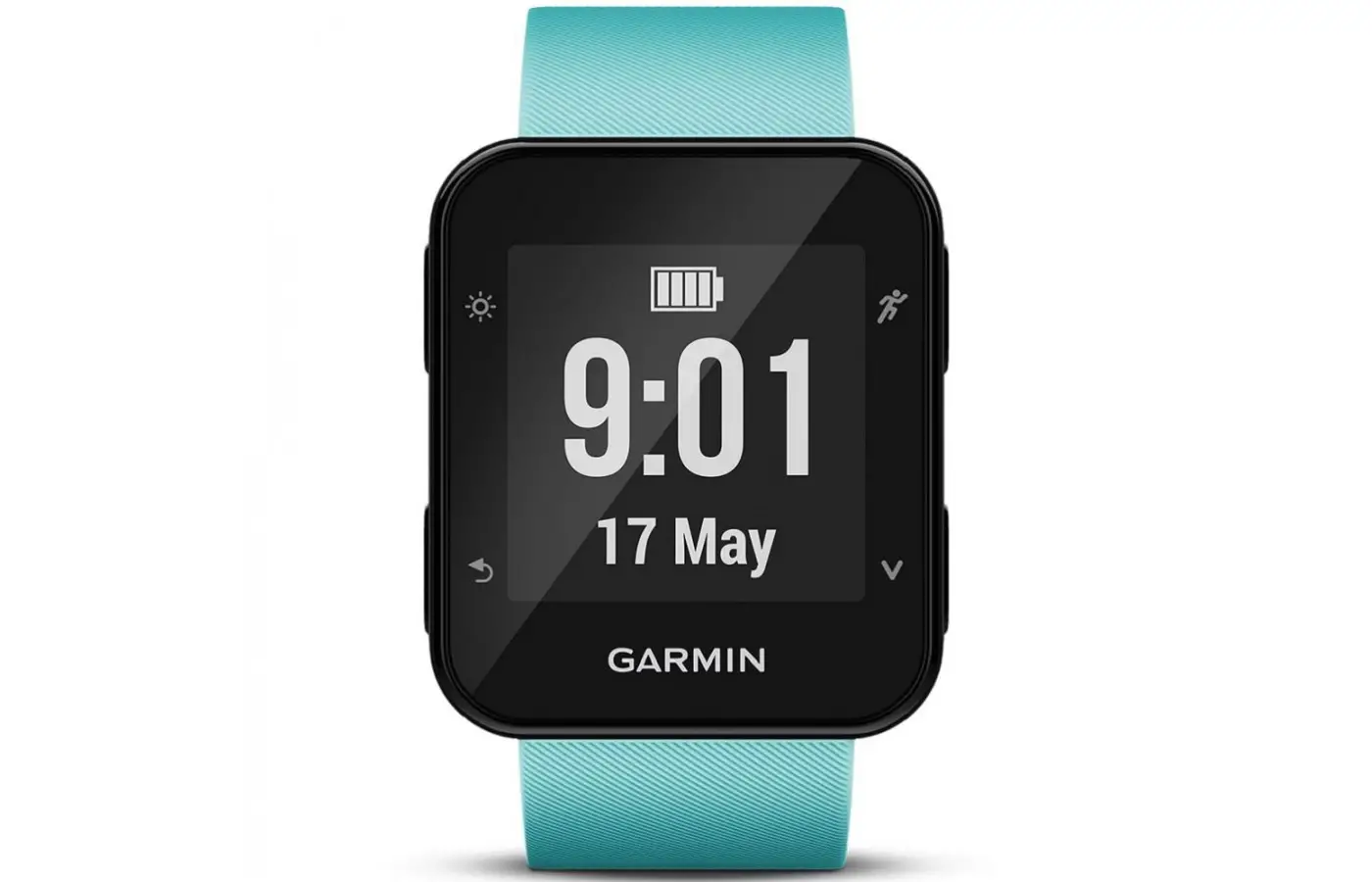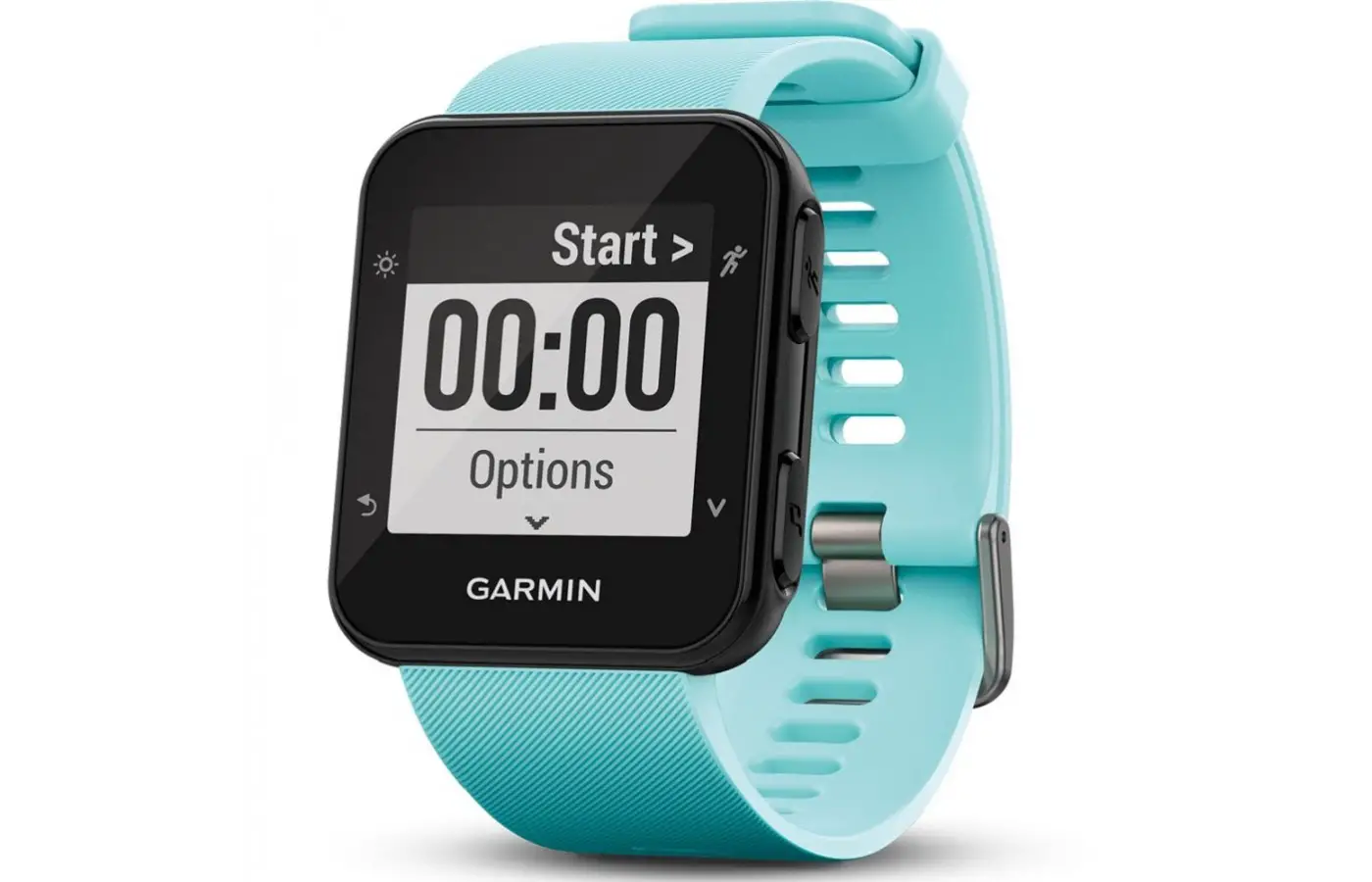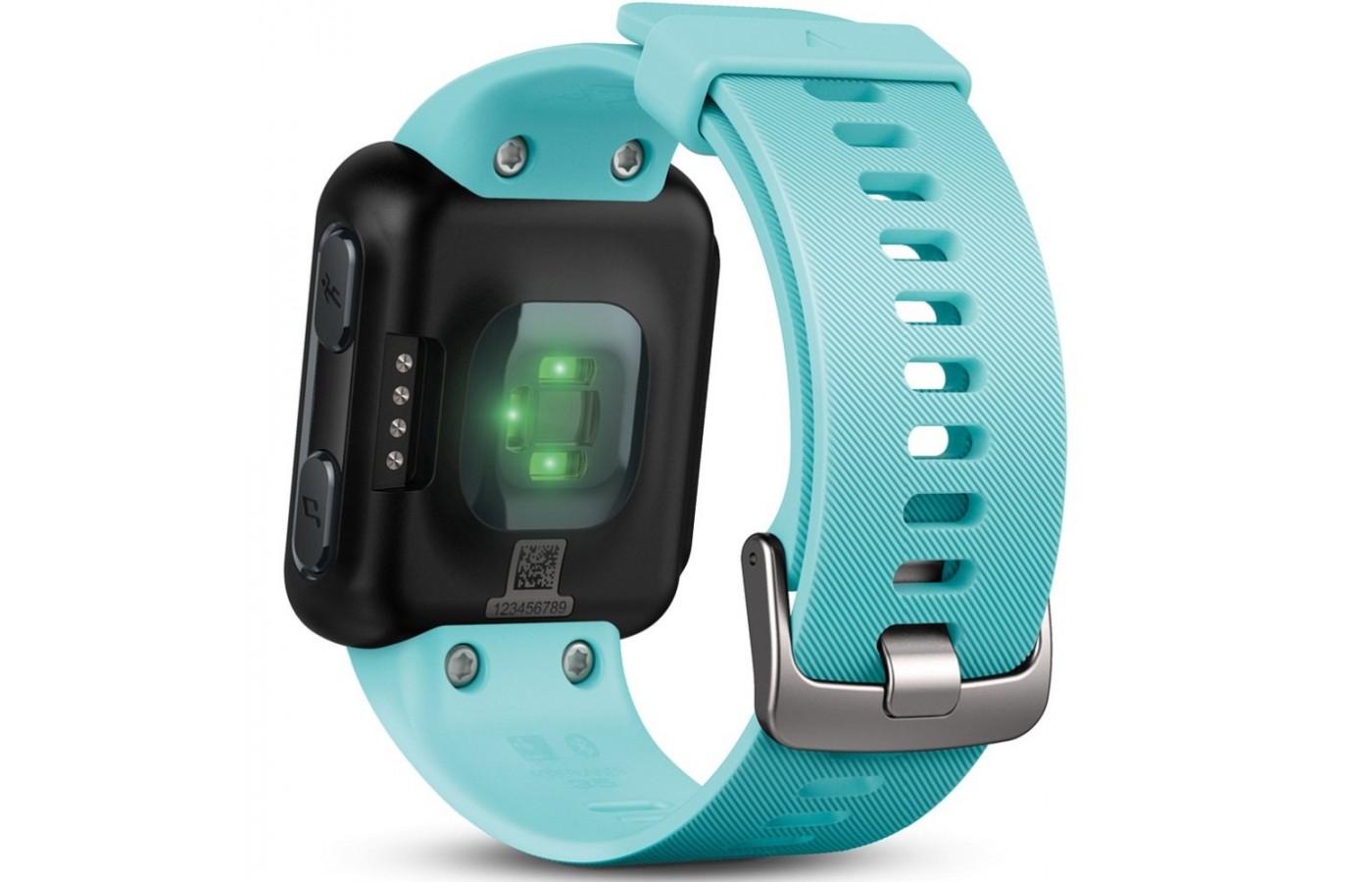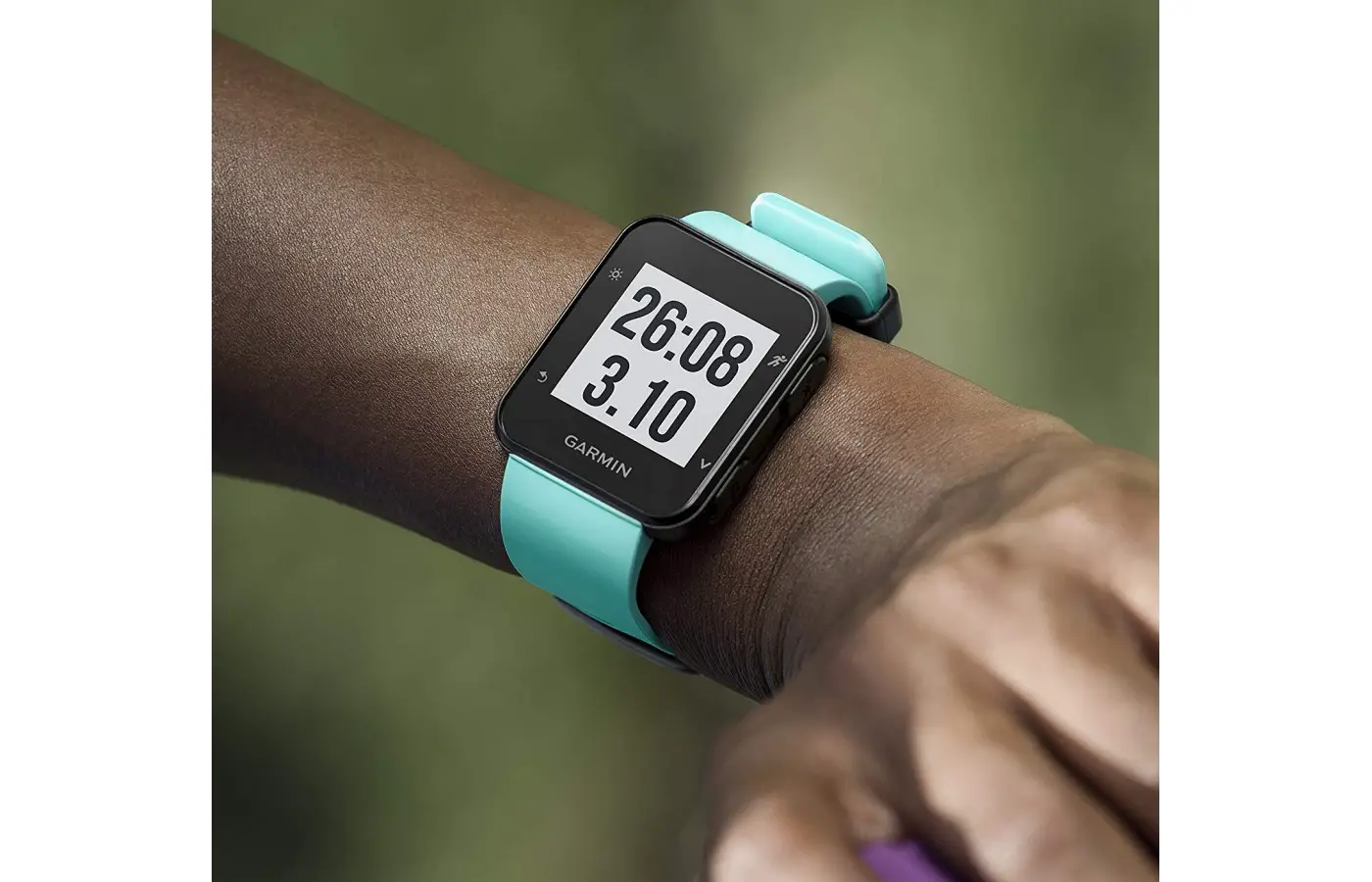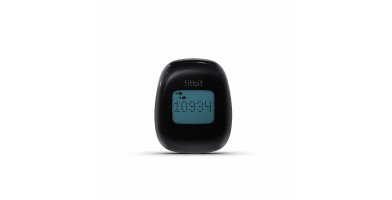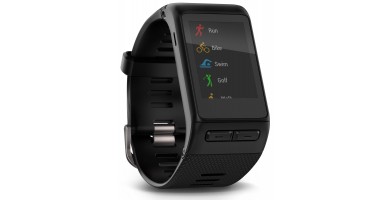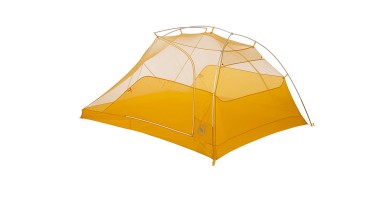Garmin Forerunner 35
The F35 is the cheapest running watch with the wrist heart rate monitor in the Garmin Forerunner lineup. It is the 425 without the optical heart rate sensor. It is for the casual runner, someone who runs two or three times per week under five miles at a time, but also wants basic daily activity metrics like steps, calories burned, etc.
It’s a runner’s watch first. Garmin has added a few extras features that testers feel are interesting. Forerunner 35 retails at $199 which testers think is a bit high. A price tag of $150 to $175 is believed to be a more appropriate price.
It is nestled between the Forerunner 25 and Vivo Smart HR. If they can get over the price, it is the running watch with everything the average runner needs. The Garmin Forerunner 35 is a GPS running watch that allows users to stay connected when they share their fitness progress.
- Built-in GPS and heart rate monitoring
- Long battery life
- Tracks interval training
- User controlled music playback with a phone
- Waterproof
- Heart rate monitor accuracy
- Phone compatibility issues
- Problems with GPS
Activities
Basic Features
On the underside is an optical heart rate sensor. It is the same used in other Forerunners. The device is not on par with the chest strap heart rate monitor for strength workouts, or anything that is dynamic, but for running it is pretty good, and the fault is the function of technology, not Garmin.
For workouts, there are a few basic sports profiles - running, indoor running, cycling, and cardo. None of those are advanced features. Users do not get the hardcore features available in the Garmin Forerunner 230 or 235. Customers get the essentials - distance, pace, speed, routes, timing, cadence, and heart rate. The stats are used for personal information or shared with competing individuals.
Accuracy ratings are different among the features. Accuracy is similar to comparable brands. GPS is very accurate but sometimes takes a few minutes to access. Pacing is also accurate. The heart rate monitor accuracy is not high.
Averages seem reasonable, but current hear rates tend to be low or high at times. When worn overnight, the sleep tracker tracks sleep well. When the watch is not worn, the sleep tracker registers as peaceful sleep which is not accurate
Advanced Features
There are vibrational alerts, that can be customized for time, distance, calories, and heart rate. Interestingly, the pacing rate is not customizable. The data fields can be customized. There is Auto Pause in case the user stops for some reason such as talking to someone during a workout.
Auto Goal is a feature testers liked the previous day’s statistics determines that. It is not a static goal. A Move Bar is displayed at the bottom of the home screen as well as activity reminders to prompt the user to get up and move. There are also music controls that stream and store music. Live tracking allows family and friends to monitor and watch a run if a smartphone is taken on the run.
Connectivity
It can be connected by an ANT+ heart rate monitor if desired. Regardless, the sensor runs all day and night and during workouts, so the user gets a complete picture of daily metrics. Garmin Connect uses Bluetooth to enable sharing data with others.
It syncs via USB and Bluetooth to the Garmin Connect app. Unfortunately, it charges via proprietary clip cable which disappoints some testers. They would prefer a micro USB. To upload data, receive notifications, and listen to music the app has to be connected to a wearer’s smartphone.
Smartphone notifications include the basic texts, calls, emails, calendar alerts as well other three-party apps when in range, which is about 30 feet. Connectivity allows participation in competition with family and friends. Weather data such as hourly rain chances, daily highs and lows, and current weather can be pulled up when connected to a smartphone.
Apps
Comfort
The band is both flexible and durable. Wearing it for an extended period can be done comfortably. The lightweight band does not roll around the wrist or weigh down the user. Buttons on the sides are easy to use and comfortable to press.
Style
The square face is small. It has a black bezel that surrounds the not-so-sharp screen. Reviewers appreciate the available colors for the band. They include white, black, green and blue. Different tastes are accommodated. Most people like the style, but some feel the display and shape are ugly.
Durability
The buttons and face are durable also. Finger smudges that appear on the face may from time to time need to be wiped off. Cases and covers are available for additional protection. Two- and three-year warranties are offered by vendors of the protective items. The software and app have automatic updates to repair compatibility issues and bugs.
Face
That resolution is not very sharp when compared to desktops, tablets, and phones. There are four convenient and user-friendly buttons, two on each side of the screen. In terms of activity, tracking only displays numbers on a screen. Though it is not a touchscreen, it is prone to fingerprint smudges. Wearers should exercise caution to avoid touching the face.
Band
Ease of Use
Preserving the battery, different tracking modes, and backlight for nighttime visibility are operated with a button on the top left. Cardio, outdoor or indoor running, walking, and cycling tracking modes are selected with a button on the top right.
Alarms are set, setting adjustment, access to tracking pages and milestones, and the back function use a button on the bottom left. Scroll through previous workout data, weather, heart rate and notifications with the button on the bottom right. It also controls smartphone music playback. The user’s heart rate is monitored with the Elevate heart rate sensor on the back of the watch monitor.
Battery
The average user gets between six and seven days of battery life for someone who runs once or twice per week. Everything depends on how much a user works out. Battery life can be preserved by turning off the backlight and turning the watch off when not being used.
Price
The loss of the heart rate monitor reduces the price by $90. Connect IQ add ten dollars to the cost. The addition of Strava suffer score, advanced dynamics, and a lactate threshold would double the price of the watch.
Accessories
Apps allow the wearer to track milestones and activities, compete with friends, and upload data. A heart rate strap is compatible with the watch for those who need more accurate heart rate monitoring than provided by the FR35 alone. Cyclers can use a footpad and cadence sensor with the watch.
Key Features
* Garmin Elevate technology provides heart rate monitoring that monitors the user’s heart rate around the clock without the need for an extra strap
* High-resolution works well indoors and out
* Reminds the user to move, tracks activities all day, calories, intensity minutes and counting steps
* Smart connectivity automatically uploads Garmin Connect data
* Vibrations notify the wearer of the progress of virtual pacing, running prompts, activity milestones, and smart notifications
Bottom Line
A phone is not needed to track distance, speed, and location. The high-resolution display works well indoors and out. It is on constantly to track intensity minutes, calories, and steps throughout the day. The device notifies users when it is time to move. The Forerunner 35 is perfect for runners who want activity tracking, GPS, and heart rate monitoring. Runners new to fitness tracking find the Garmin Forerunner 35 to be a great watch.





